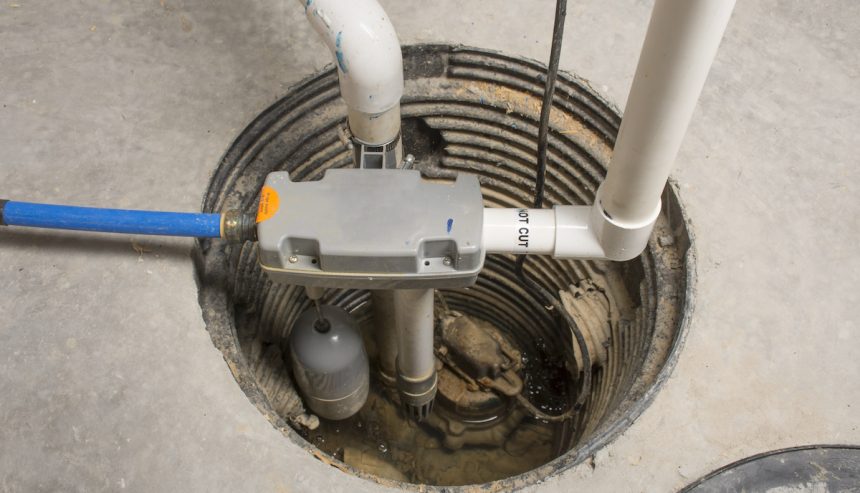Table of Contents
What are the Risks of Not Having a Proper Sump Pump?
Water damage in basements can result from several sources. Heavy rainfall, snowmelt, broken pipes, or rising groundwater can all lead to flooding. According to industry experts, basement flooding affects approximately 60% of American homes at some point.
Standing water creates serious health risks for families, particularly children, elderly residents, and those with respiratory conditions. Additionally, water damage leaves behind moisture that can cause structural problems, mold growth, wood rot, and damage to electrical systems, flooring, and personal belongings – this is why you need the best sump pump for your specific situation.

Benefits of Installing the Right Sump Pump
Installing an appropriate sump pump system is crucial for protecting your property and maintaining your home’s value. The longer water is allowed to accumulate, the more it will damage your foundation, walls, floors, and stored items, making repairs exponentially more expensive. Additionally, water damage can lead to long-term structural issues if not addressed with proper drainage systems.
What Affects the Cost of the Best Sump Pump Installation
Sump pumps cost $600 to $2,500 with installation on average, depending on the type, size, and installation difficulty. The total investment varies based on several key factors that homeowners should consider when selecting their system.
Home Size and Foundation Type as Cost Factors
The cost of sump pump installation depends significantly on your home’s size, foundation type, and accessibility. Some basements require more extensive preparation work than others.
According to water damage specialists, “The extent of excavation required and the size of the affected drainage area play significant roles, as more complex installations may require additional trenching and waterproofing measures. The depth of your basement and accessibility of the installation area can affect the complexity and cost of the project.”
Homes with deeper basements or difficult-to-access areas will require more labor and specialized equipment, increasing project costs. For example, if your basement has low ceilings or tight spaces, professionals may need special tools to complete the installation.
The larger your basement area, the more pumping capacity you’ll need, which affects both equipment and installation costs. If you need additional drainage systems like French drains or multiple sump pits, costs will increase accordingly.
Severity and Accessibility | Sump Pump Installation
The level of water intrusion risk differs between properties. Sump pump installation takes more time and materials in homes with severe drainage issues compared to properties with minor water concerns.
Installation costs may increase when there’s difficulty accessing the work area or when existing plumbing modifications are required.
Pump Type | Cost Factors
There are several types of sump pumps available for different applications depending on your basement layout and water intrusion severity. These include:
- Submersible pumps – More expensive but powerful and quiet operation
- Pedestal pumps – More affordable and easier to maintain
- Battery backup systems – Essential for power outage protection
- Water-powered backup pumps – Alternative backup option using municipal water pressure
Different Types of Sump Pump Systems
When selecting the best sump pump for effective water removal, several options are available depending on your specific needs and budget. These include:
Submersible Sump Pumps
Submersible pumps offer more power and quieter operation but cost more upfront and are harder to maintain. These units sit entirely within the sump pit, submerged underwater when activated, with the motor and pump enclosed in waterproof housing.
Pedestal Sump Pumps
Pedestal pumps are more affordable and easier to service but are louder and less powerful. These feature a motor mounted above the sump pit with the pump mechanism extending down into the water.
Battery Backup Systems
Essential for homes in areas prone to power outages during storms, battery backup sump pumps automatically activate when your primary pump fails or loses power.
Water-Powered Backup Pumps
These systems use your home’s municipal water pressure to create suction and remove water, providing backup protection without electricity or batteries.
Best Sump Pump Selection: Step-by-Step Process
Choosing the right sump pump involves a systematic evaluation process. This ensures you get optimal protection tailored to your home’s specific needs. The selection process includes:
Assess Your Water Intrusion Risk
Evaluate your basement’s flood history, local groundwater levels, and seasonal water patterns. Properties in flood-prone areas or with known drainage issues require more robust pumping systems.
Determine Required Pumping Capacity
Calculate the volume of water your pump needs to handle based on your basement size, local rainfall patterns, and drainage area. Professional assessment helps determine proper horsepower requirements.
Choose the Right Pump Type
Select between submersible and pedestal models based on your sump pit configuration, noise tolerance, and maintenance preferences.
Plan for Backup Protection
Install battery or water-powered backup systems to ensure continuous protection during power outages or primary pump failures.
Post-Installation Best Practices
After your sump pump system is installed, following these guidelines helps ensure reliable long-term protection:
Regular Testing and Maintenance
Test your sump pump monthly by pouring water into the pit to verify proper operation. Clean the pit regularly and check that the float switch moves freely.
Backup System Monitoring
Ensure battery backup systems maintain proper charge levels and replace batteries according to manufacturer recommendations. Test backup pumps seasonally.
Professional Inspections
Schedule annual professional inspections to verify proper operation, check discharge lines, and identify potential issues before they become problems.
Why Choose Professional Sump Pump Installation?
Attempting DIY sump pump installation can lead to costly mistakes and inadequate protection. Professional installation services bring specialized knowledge, tools, and experience to ensure proper system design and installation. Here’s what sets professional installation apart:
Expertise in All System Types
Professional installers understand the nuances of submersible, pedestal, and backup systems, customizing the installation approach to suit your property’s unique drainage needs.
Advanced Tools and Proper Sizing
From excavation equipment to electrical connections, professional services employ specialized tools that ensure proper installation depth, pit sizing, and discharge line routing.
Protection of Property Value
Proper sump pump installation helps maintain your home’s value by preventing water damage and providing documentation of protective measures for potential buyers.
Top-Rated Sump Pump Models for 2025
Based on professional reviews and homeowner feedback, the Superior Pump 91246 Automatic Utility Pump is a top choice among other top-tier options. The best sump pump options include pedestal, “smart” and battery-backup models that prevent basement flooding effectively.
When researching the best sump pumps, consider models with proven reliability, adequate horsepower for your needs, and compatibility with backup systems.
Conclusion
A quality sump pump system is an essential investment in both property protection and peace of mind for homeowners at risk of basement flooding. With professional installation, proper sizing, and regular maintenance, the best sump pump for your home will provide years of reliable protection against water damage, preserving your property value and family’s safety.
Protect Your Home & Restore Your Peace of Mind
Don’t let water damage overwhelm your basement and foundation. Contact a qualified sump pump professional today for a comprehensive assessment. They’ll guide you through the selection and installation process, ensuring your property receives the best protection available for your specific situation and budget.
Protect Your Investment & Restore Your Peace of Mind
Don’t let water damage and potential mold growth overwhelm you. Contact PuroClean of Plymouth Meeting today at (484) 412-4422 for a free consultation. We’ll be there to guide you through the restoration process and ensure your property is restored quickly, safely, and efficiently.
Instagram | Facebook | Direction | Check Reviews



